Watermelons are the ultimate symbol of summer — juicy, refreshing, and full of natural sweetness. But what if you don’t have a large backyard or farmland to grow them? Here’s the good news: you can successfully grow watermelons in pots and still enjoy a heavy harvest of sweet, delicious fruits right at home!
Inspired by innovative gardeners across Asia, especially in Indonesia (where it’s known as cara menanam semangka di pot supaya berbuah lebat), container watermelon gardening has become a popular trend. It’s an efficient way to grow big fruits in small spaces, whether you live in an apartment, have a balcony garden, or just want to try something fun and productive.
In this guide, we’ll cover everything you need to know — from selecting the right pot and soil to pruning, watering, and fertilizing — so you can grow a bountiful watermelon harvest in containers without needing a large garden.
Why Grow Watermelons in Pots?
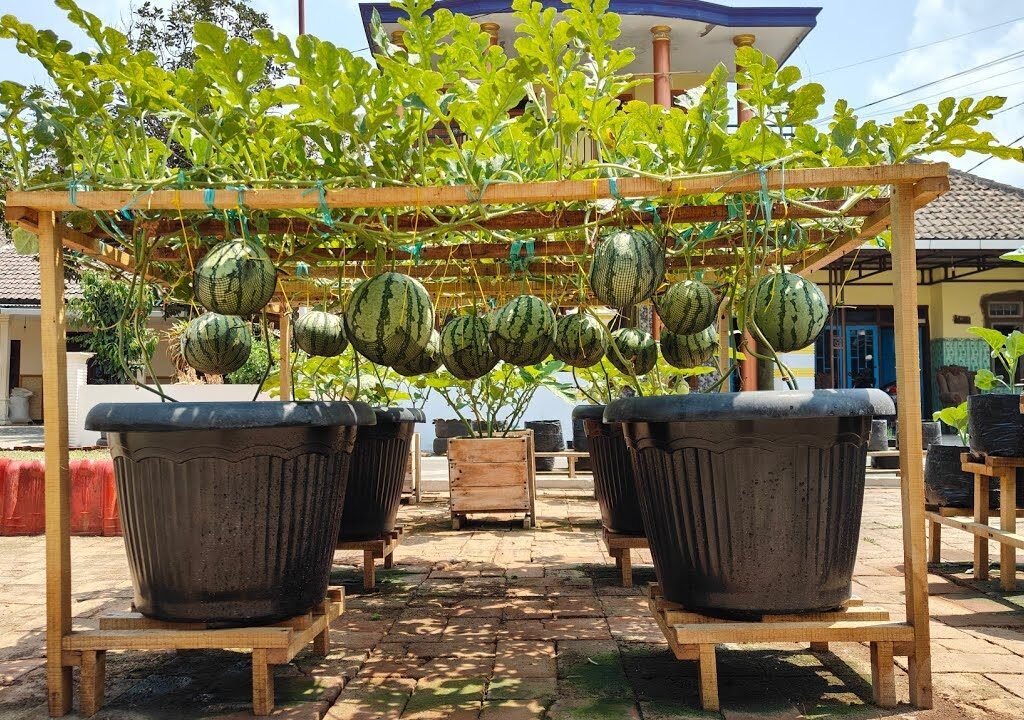
At first, the idea of growing such a sprawling fruit plant in a container might seem impossible. But with a few smart techniques, you can make it work beautifully.
Here’s why growing watermelons in pots is a great idea:
- Space-saving: Perfect for balconies, patios, or rooftops.
- Water-efficient: Easier to control watering and drainage.
- Portable: You can move pots to maximize sunlight exposure.
- Cleaner fruit: Fruits stay off the ground, reducing rot and pest problems.
- Control: You can manage soil quality, nutrients, and pest protection better.
With the right setup, even small-space gardeners can harvest multiple sweet, full-sized melons!
Choosing the Right Watermelon Variety for Pots
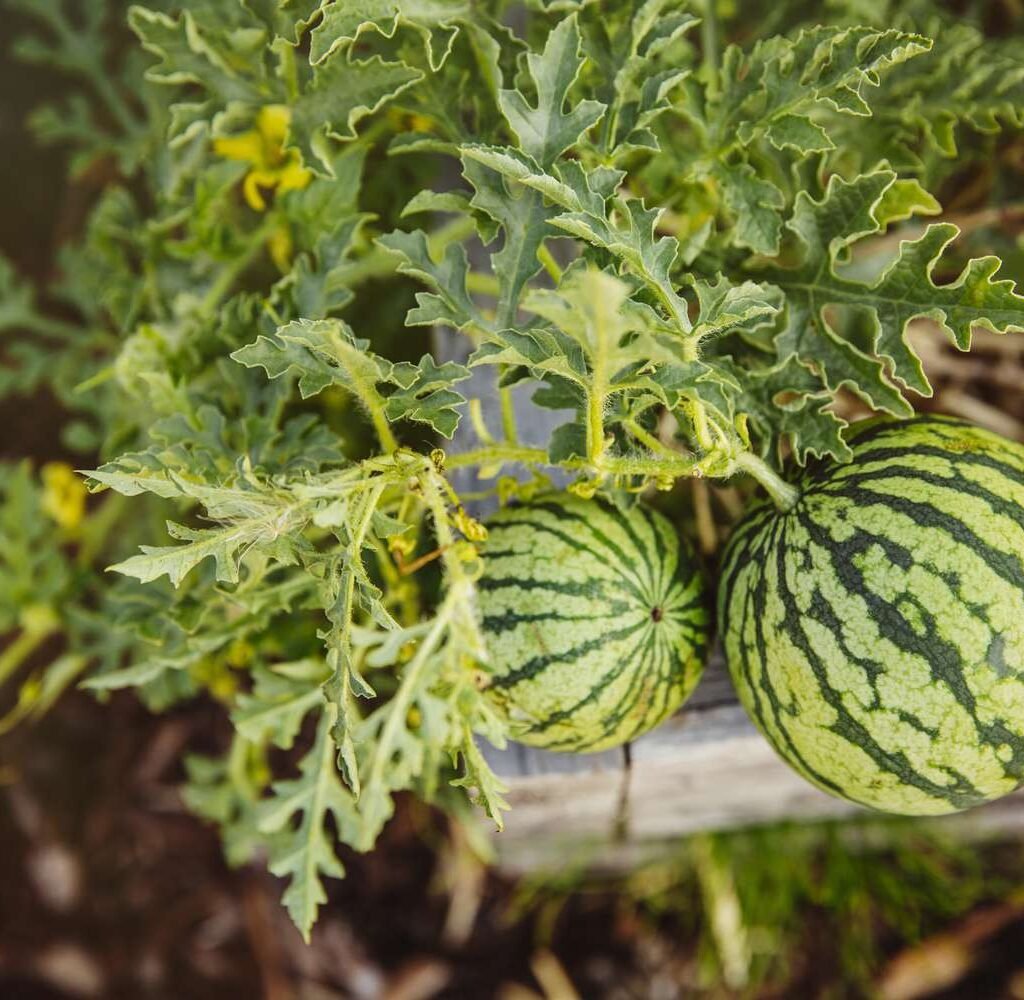
Not all watermelon varieties are suitable for container growing. The best ones are compact or dwarf varieties that produce smaller but equally delicious fruits.
Here are some excellent choices:
- Sugar Baby: A small, round variety that matures quickly and produces sweet, red flesh.
- Golden Midget: Compact and fast-growing, perfect for containers.
- Bush Sugar Baby: A bush-type watermelon ideal for limited spaces.
- Mini Love: Produces 4–6 lb (2–3 kg) fruits with crisp texture.
These varieties have shorter vines and mature faster, making them ideal for container gardening.
Step-by-Step: How to Grow Watermelons in Pots
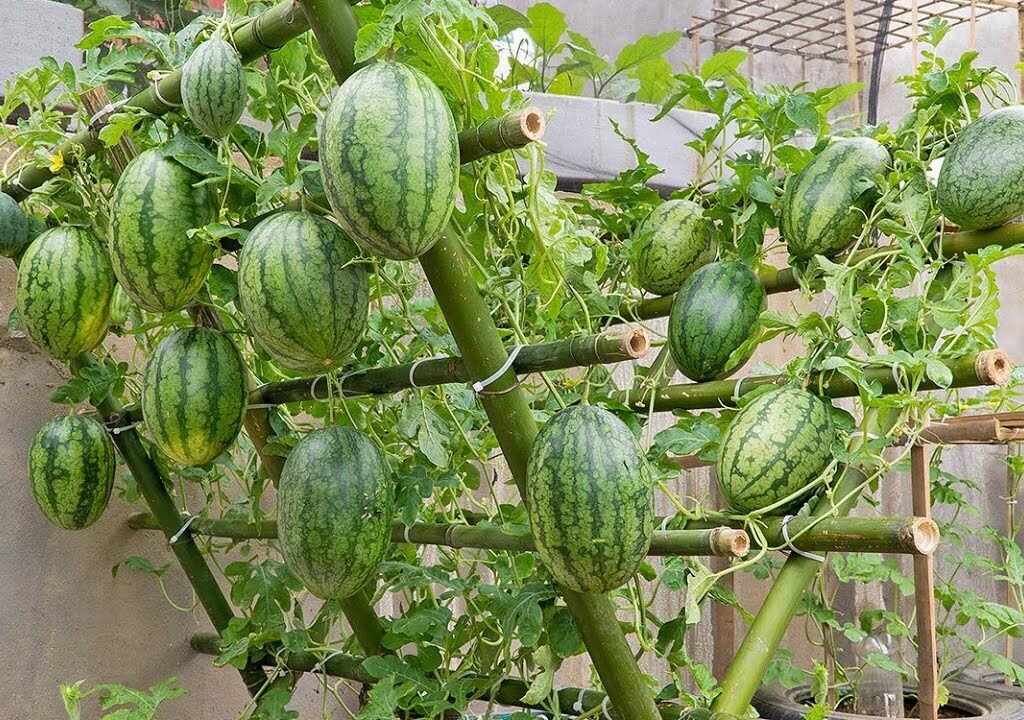
Let’s break down the process of growing watermelons in pots for a heavy harvest.
Step 1: Choose the Right Pot
Watermelons need space for their roots to spread. Choose:
- A large pot — at least 20–25 gallons (75–100 liters) in volume.
- Ensure the pot has drainage holes to prevent waterlogging.
- Plastic, ceramic, or fabric grow bags all work well.
If you’re using smaller pots, stick to mini varieties and train the vines to grow vertically using a trellis.
Step 2: Prepare the Perfect Soil Mix
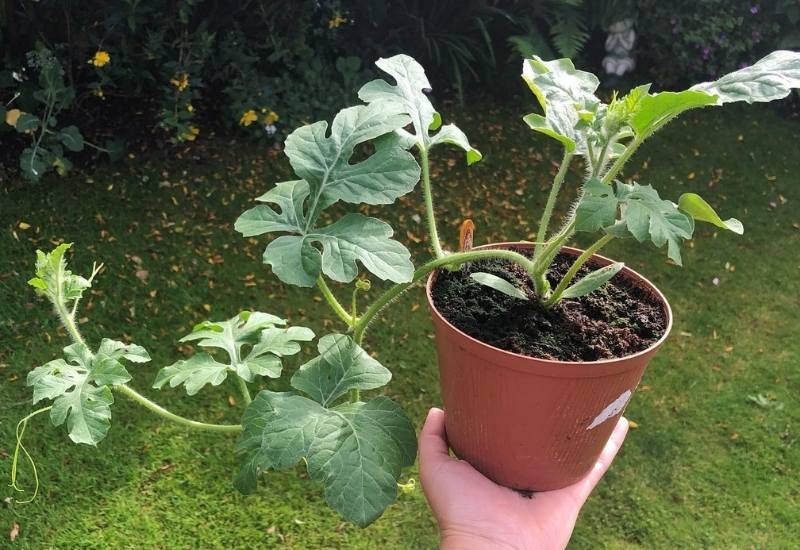
Watermelons love loose, well-drained, and nutrient-rich soil. Heavy clay or compacted soil will stunt growth.
Here’s a good potting mix recipe:
- 40% garden soil
- 40% compost or aged manure
- 20% coco peat or perlite (for aeration)
Add a handful of bone meal or organic fertilizer to enrich the soil with phosphorus and potassium — essential nutrients for fruit development.
Step 3: Planting the Seeds
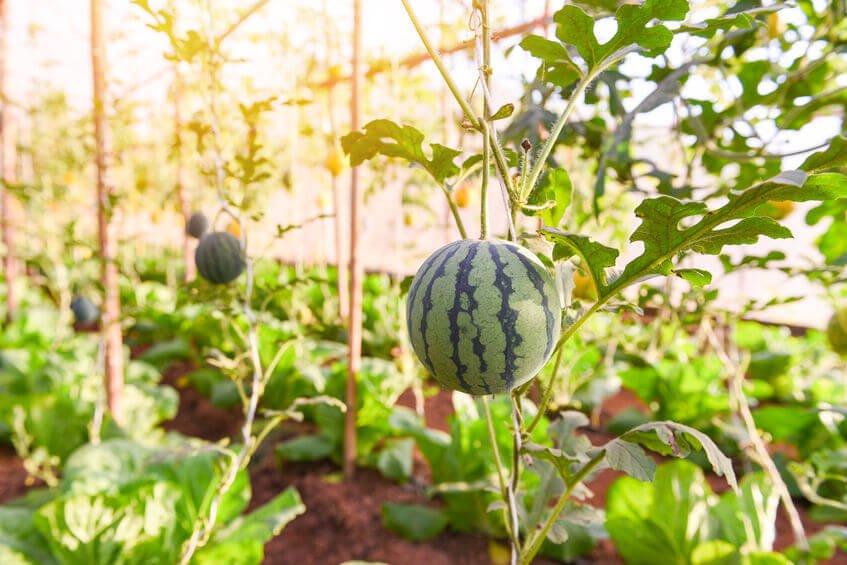
- Sow 2–3 seeds per pot, about 1 inch deep.
- Water lightly after sowing.
- Keep the pot in a warm, sunny spot (around 25–30°C / 77–86°F).
- Once seedlings sprout, thin them down to one strong plant per pot.
Tip: If you prefer faster results, you can start seeds indoors in small cups and transplant them when they have 2–3 true leaves.
Step 4: Sunlight Is Key
Watermelons need at least 6–8 hours of direct sunlight daily.
If you live in a cloudy region, consider using a reflective surface or repositioning your pots during the day to maximize light exposure.
Sunlight is critical for photosynthesis and sugar production — the secret to sweet, juicy melons!
Step 5: Watering Correctly
Consistent watering is crucial, but overwatering is dangerous.
- Keep soil evenly moist, especially during flowering and fruiting.
- Avoid watering the leaves directly; focus on the base.
- As fruits mature, reduce watering slightly to increase sweetness.
Pro tip: Use a self-watering pot or drip system to maintain balanced moisture.
Step 6: Feeding Your Watermelon Plants
Watermelons are heavy feeders. To get lots of fruit, you must supply plenty of nutrients throughout their growth.
- Apply organic compost or liquid fertilizer every 2–3 weeks.
- During the vegetative stage, use nitrogen-rich fertilizer (like fish emulsion).
- Once flowering begins, switch to a phosphorus and potassium-rich fertilizer to encourage fruiting.
Homemade options like banana peel fertilizer or compost tea work beautifully.
Step 7: Support and Training
Even compact watermelon vines can spread widely. If you’re short on space:
- Use a sturdy trellis or net to train vines vertically.
- Support developing fruits with cloth slings to prevent them from breaking off.
- For ground-level pots, gently guide vines in circular patterns to save space.
This keeps fruits clean, prevents rotting, and improves air circulation.
Step 8: Pollination
Watermelons rely on pollination for fruit set. If you’re growing indoors or in a closed area, pollinators may be scarce.
You can hand-pollinate using a small brush:
- Identify male flowers (with thin stems) and female flowers (with a small fruit-shaped bulge).
- Transfer pollen from male to female using the brush or by directly touching them together.
Pollinate in the morning when flowers are fully open for best results.
Step 9: Pruning for Better Fruits
To ensure your watermelon plant produces large, healthy fruits:
- Remove weak side shoots and excess foliage to direct energy to fruit growth.
- Limit each plant to 2–3 fruits for maximum size and sweetness.
Regular pruning also improves airflow and reduces disease risks.
Step 10: Protecting from Pests and Diseases
Container-grown watermelons are generally less prone to pests, but watch out for:
- Aphids and whiteflies: Use neem oil spray or insecticidal soap.
- Powdery mildew: Improve ventilation and avoid overhead watering.
- Root rot: Ensure your pot drains well and never stays waterlogged.
Planting marigolds or basil nearby can naturally repel many pests.
Harvesting: The Moment of Sweet Reward
Watermelons are ready to harvest 70–90 days after planting, depending on the variety. Here’s how to know when they’re perfectly ripe:
- The tendril near the fruit stem turns brown and dries.
- The underside of the fruit (where it touches the soil) turns creamy yellow.
- The sound test: Tap the fruit; a deep, hollow sound means it’s ripe!
Use pruning shears to cut the melon, leaving a few inches of stem attached.
Tips for Getting a Heavier Harvest (“Berbuah Lebat”)
If your goal is to make your potted watermelon plants bear heavily, follow these expert tricks:
- Choose the right container size — Bigger roots = more fruit.
- Feed regularly with organic fertilizer during flowering and fruiting.
- Encourage pollination by hand or by attracting bees.
- Control vine growth — Don’t let vines get too long; trim to focus on fruit development.
- Rotate the pot occasionally to ensure all sides get sunlight.
- Mulch the surface to keep the roots cool and moist.
These small actions can double your fruit yield and improve sweetness significantly.
Common Problems and Solutions
| Problem | Cause | Solution |
|---|---|---|
| Fruits not forming | Poor pollination | Hand-pollinate flowers |
| Yellow leaves | Overwatering or nutrient deficiency | Adjust watering; add compost |
| Small or tasteless fruits | Too many fruits per plant | Prune to 2–3 fruits per vine |
| Slow growth | Lack of sunlight | Move pot to sunnier spot |
The Science Behind Growing Watermelons in Pots
Watermelons need warmth, consistent moisture, and balanced nutrients to thrive. In pots, the root zone is warmer and more controlled, which speeds up growth. However, nutrients and moisture can deplete quickly, so regular monitoring is key.
When managed carefully, container-grown melons can rival — or even surpass — those grown in open soil. Many gardeners report that potted watermelons ripen faster and taste sweeter, thanks to optimal growing conditions and precise care.
Final Thoughts: Big Fruits from Small Spaces
Growing watermelons in pots proves that you don’t need acres of farmland to enjoy fresh, homegrown fruit. With the right pot, good soil, consistent care, and a little patience, you can harvest large, sweet watermelons right from your balcony, terrace, or small yard.
It’s a satisfying project for beginners and seasoned gardeners alike — combining creativity, sustainability, and delicious results.
So, grab some pots, pick your favorite mini watermelon variety, and get planting. With a little effort and love, you’ll soon be cutting into your very own homegrown watermelon — proof that even the biggest fruits can come from the smallest spaces.
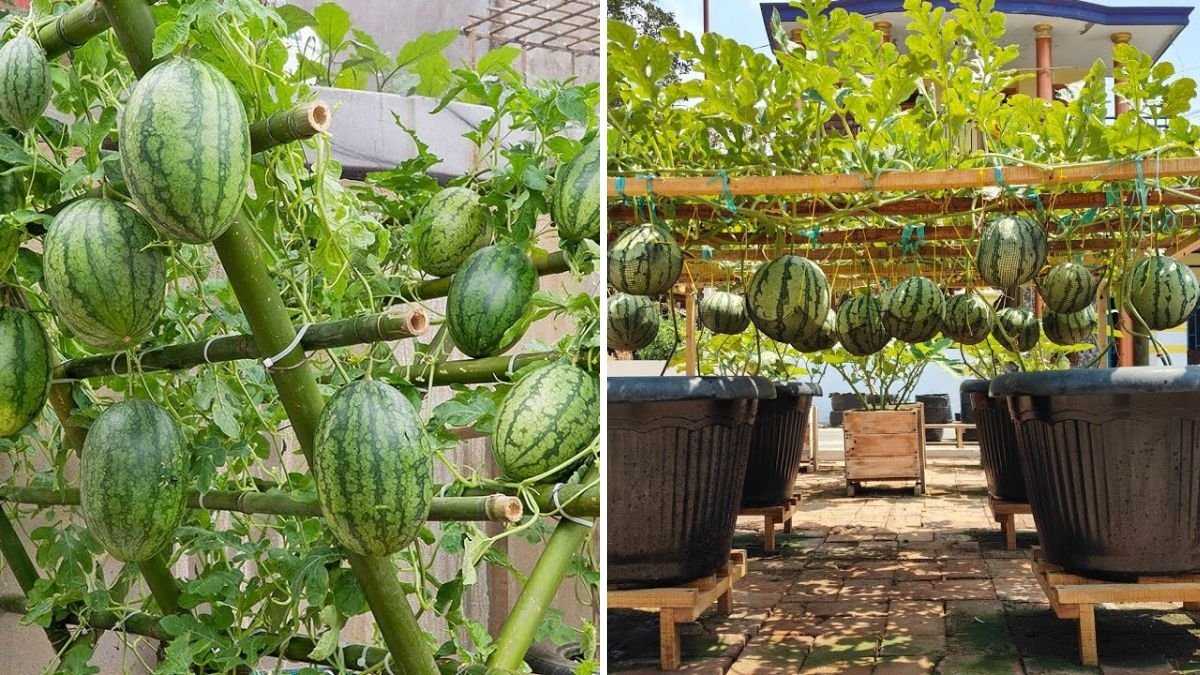




Leave A Comment